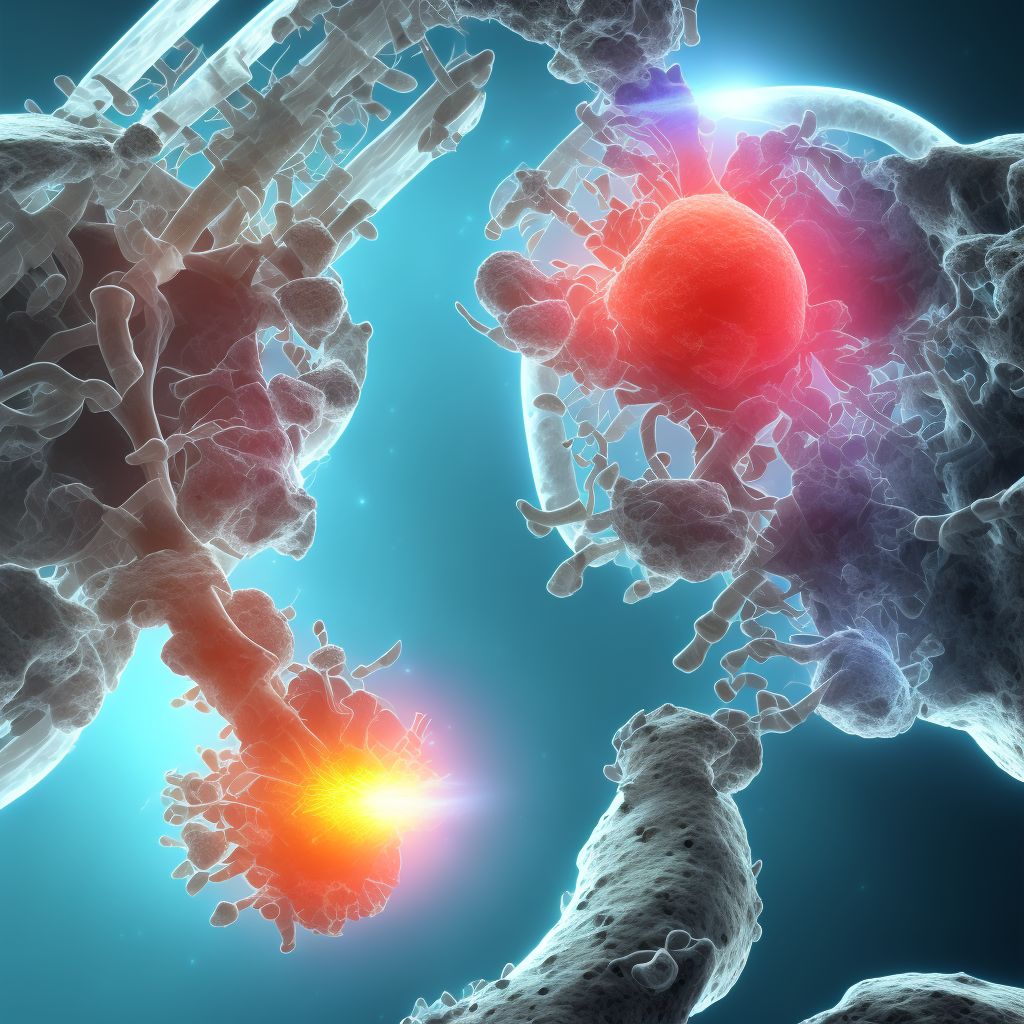
Nondisplaced fracture of medial condyle of unspecified tibia, subsequent encounter for open fracture type IIIA, IIIB, or IIIC with malunion Save
ICD-10 code: S82.136R
Disease category: S82.136: Nondisplaced fracture of medial condyle of unspecified tibia
Nondisplaced Fracture of Medial Condyle of Unspecified Tibia: Understanding Subsequent Encounter for Open Fracture Type IIIA, IIIB, or IIIC with Malunion
When it comes to fractures, the nondisplaced fracture of the medial condyle of the unspecified tibia is a specific type that requires attention. In some cases, this fracture can lead to an open fracture with type IIIA, IIIB, or IIIC complications, resulting in malunion. In this article, we will explore the implications and significance of a subsequent encounter for such fractures.
1. Understanding Nondisplaced Fractures:
A nondisplaced fracture refers to a fracture where the bone remains in its proper anatomical alignment. In the context of the medial condyle of the unspecified tibia, this type of fracture occurs without any significant displacement.
2. Open Fracture Type IIIA, IIIB, or IIIC:
An open fracture refers to a fracture where the bone breaks through the skin, creating an open wound. Open fractures are categorized based on the severity of the injury, and type IIIA, IIIB, or IIIC represents fractures with increasing levels of soft tissue damage and potential complications.
3. Subsequent Encounter:
A subsequent encounter indicates a follow-up visit after the initial diagnosis and treatment of a condition. In the case of an open fracture with malunion, subsequent encounters are crucial for assessing the progress of healing, managing any complications, and monitoring the patient's overall recovery.
- Thorough Evaluation:
- Complication Management:
- Rehabilitation and Support:
During a subsequent encounter, healthcare professionals will conduct a comprehensive evaluation of the patient's condition. This may include physical examinations, imaging studies, and discussions with the patient regarding their symptoms and progress.
Open fractures with malunion can lead to several complications, such as infection, delayed healing, or deformities. Subsequent encounters allow medical professionals to monitor and manage these complications effectively, ensuring optimal outcomes for the patient.
Subsequent encounters also provide an opportunity to address the patient's rehabilitation needs. Healthcare providers may recommend physical therapy, assistive devices, or other interventions to aid in the patient's recovery and functional restoration.
In conclusion, a nondisplaced fracture of the medial condyle of the unspecified tibia, subsequent to an open fracture type IIIA, IIIB, or IIIC with malunion, requires careful management and monitoring. Subsequent encounters play a vital role in evaluating the progress, managing complications, and supporting the patient in their recovery process.
Treatment of Nondisplaced fracture of medial condyle of unspecified tibia, subsequent encounter for open fracture type IIIA, IIIB, or IIIC with malunion:
Treatment Options for Nondisplaced Fracture of Medial Condyle of Unspecified Tibia with Malunion
A nondisplaced fracture of the medial condyle of the tibia refers to a type of fracture where the bone is cracked or broken but the pieces remain aligned. When this fracture occurs, it can lead to malunion, a condition where the fractured bone heals in a misaligned or improper position....
To see full information about treatment please Sign up or Log in